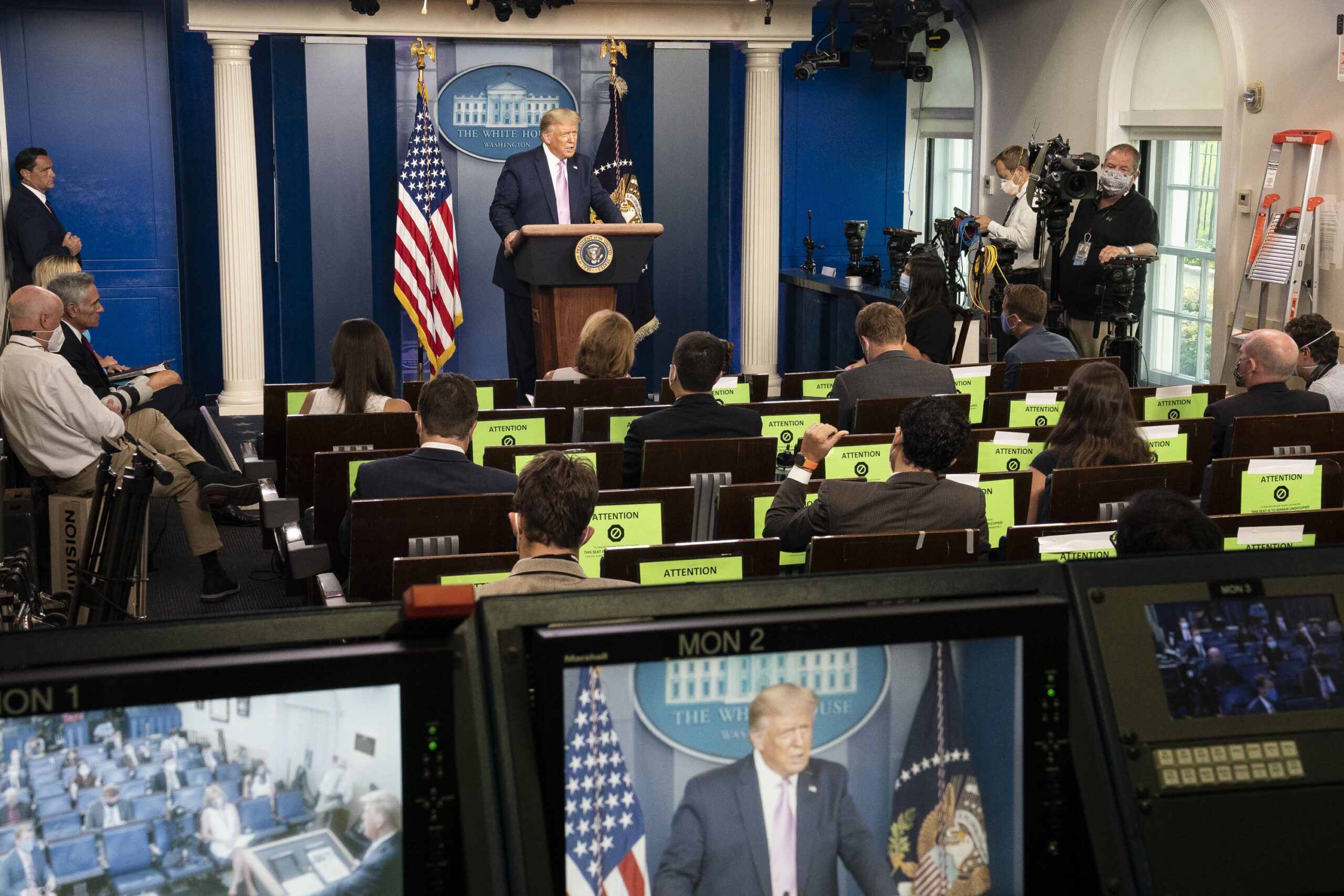Americans are more divided than ever on which news sources and journalists to trust, and with so much misinformation out there, it’s getting harder to know what’s true. When a president labels outlets like CNN and MSNBC “corrupt” and their work “illegal,” like President Trump did in a speech at the U.S. Department of Justice on March 14, this divide deepens
According to an article The New York Times published in February, more than 8,000 pages have disappeared from the White House website since Donald Trump’s return. Journalists were kicked out of the Oval Office, press briefings have become more hostile, and as information shifts or goes missing, it’s becoming harder to track what’s true and what’s being left out.
Every time a new president is sworn in, the White House website changes to reflect their policies and priorities. But this time, the Trump administration has censored terms about LGBTQ+ rights, DEI, and climate change. An Associated Press reporter also lost press access after refusing to acknowledge what the world calls the “Gulf of Mexico” as the “Gulf of America.” Press Secretary Karoline Leavitt defended revoking journalists’ access, saying the White House was “holding lies accountable.” Some reporters have pushed back, arguing that removing journalists who upset the administration attacks their First Amendment rights.
President Trump’s team has directly bullied journalists. On the White House website, they mock CNN employees and label them “the Fake News losers at CNN.” That kind of name-calling can shape the public’s perception of the journalists’ credibility and, in turn, affect how much people trust the news.
According to a 2024 Pew Research Center survey, 77% of Democrats trust the news survey shows that Americans think the news they see is only a portion of what they should see. The same study says that most U.S. adults believe the news media purposely avoid reporting specific types of stories.
I spoke with Mia Blackman, a CNN researcher who ensures the accuracy of news reports.
“People do not always stop to ask, ‘Where is this coming from?’ or ‘Is this a reputable source?’ And that is how misinformation spreads,” she said.
Blackman’s first rule is to go straight to the source. “If you are trying to confirm something, always check the primary source first,” she explained. “Government websites and official statements usually have the most reliable information. But when those sources are not available, fact-checking gets a lot harder.”
If you try to find specific pages on the White House website, you might hit a dead end. Blackman suggests using the Internet Archive (archive.org), which saves past versions of websites so that anyone can see the deleted pages.
But it’s not just about missing pages. Misinformation is everywhere, and it doesn’t always look fake. A viral post, a misleading headline, or an out-of-context quote can spread faster than the truth, especially on social media.
I asked 10 teens from all over metro Atlanta where they got their news. Every single one said social media.
“A lot of teens get their news from TikTok or Instagram,” Blackman said. “That is not necessarily bad, but it does mean they are more likely to come across misinformation. People trust what looks good, even if it is not accurate.”
She encourages young people to start asking more questions. “It’s easy to hit repost without thinking twice,” Blackman said. “But take a minute. Who is saying this? What is their source? Does this information show up anywhere else?”
However, access to accurate information is becoming more challenging, especially when the government complicates things.
The White House Correspondents’ Association (WHCA) released a statement in February stating that the White House does not decide who is and is not a “legitimate” news organization. The WHCA, which has represented White House journalists since 1914, has vehemently opposed the administration’s decision to control press access.
“This move tears at the independence of a free press in the United States. It suggests the government will choose the journalists who cover the president. In a free country, leaders must not be able to choose their own press corps,” WHCA President Eugene Daniels said in a February statement.
As of April 8, a federal judge said the White House can’t stop the Associated Press from going to events just because they didn’t say what the president wanted. The judge called it “contrary to the First Amendment.”
